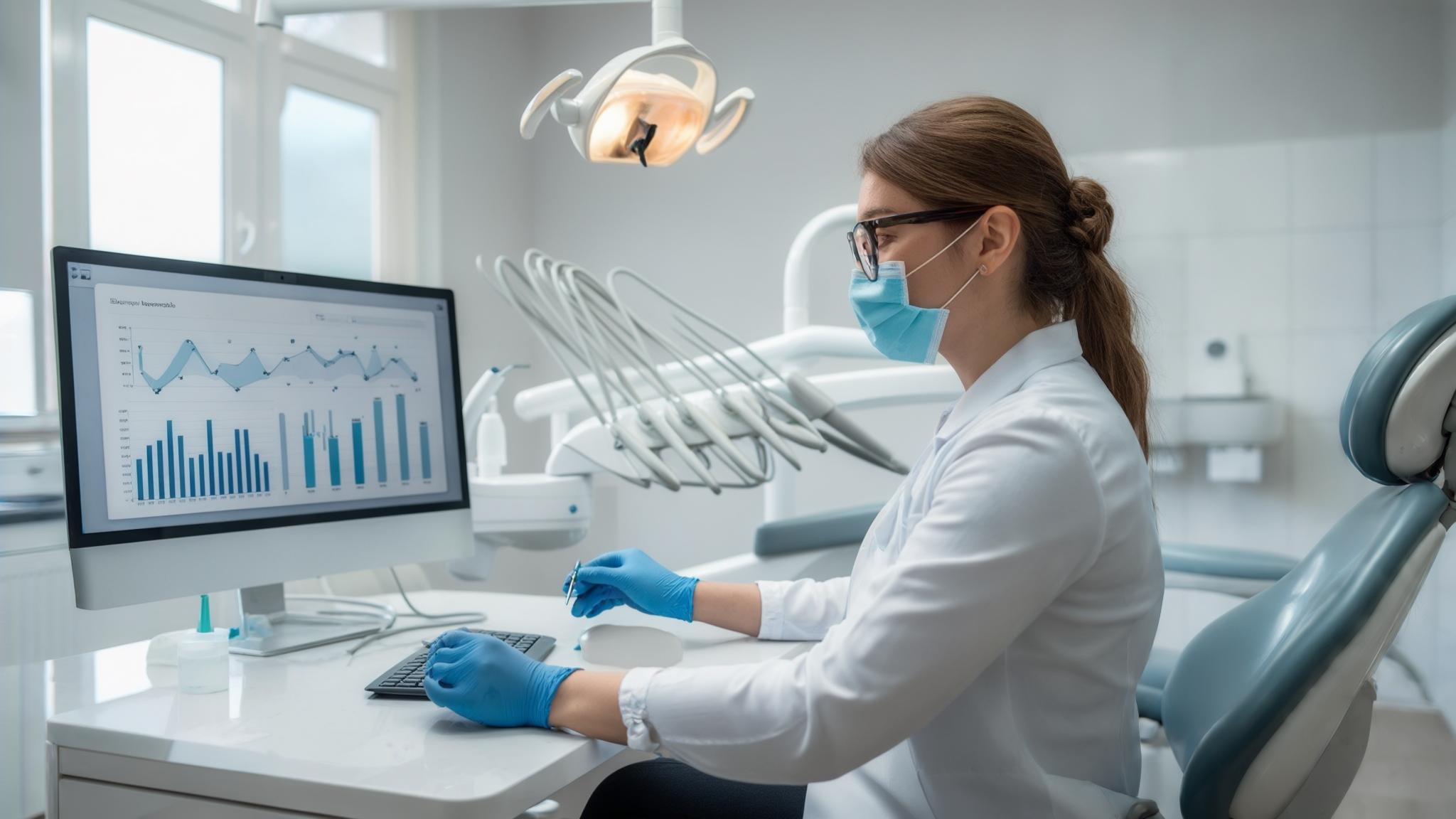I stumbled across this stat the other day that honestly stopped me dead in my tracks: studies show that more than 50% of all website visitors are on a mobile device and many use the Google maps app to find local businesses. Hit me right in the gut because it reminded me of my own dentist’s situation a few years back. Dr. Peterson had been taking care of my family for over 20 years – incredible guy, gentle hands, really knew his stuff. But online? Practically invisible. You’d think after two decades of excellent care, he’d be booked solid. Instead, he was losing patients to the flashy new practice down the street with their slick website and aggressive Google ads.
That’s exactly why I’ve spent months digging into these 25 real dentist SEO case studies. And I mean REAL – with actual revenue numbers, specific strategies that worked (and some that didn’t), and honest timelines for results. No fluff, no “results may vary” nonsense. Just what actually moved the needle for dental practices dealing with everything from small-town competition to big-city corporate chains breathing down their necks.
Table of Contents
-
What Makes a Dentist SEO Case Study Worth Your Time
-
Quick Wins You Can Implement Today
-
Local SEO Domination Strategies
-
Small Town Market Capture
-
Multi-Location Coordination
-
Pediatric Niche Targeting
-
Emergency Dental Visibility
-
Cosmetic Authority Building
-
-
Technical SEO Transformations
-
Legacy Website Overhauls
-
CMS Migration Success
-
Mobile-First Optimization
-
International Patient Targeting
-
Voice Search Adaptation
-
-
Content Marketing Excellence
-
Educational Blog Strategies
-
Video Content Impact
-
Email Integration Success
-
Community Partnership Content
-
Multilingual Expansion
-
-
Competitive Analysis & Market Penetration
-
Independent vs Corporate Chains
-
Specialist vs General Practice
-
New Practice Market Entry
-
Acquisition Integration
-
Niche Service Domination
-
-
E-commerce & Online Booking Integration
-
Appointment Booking Optimization
-
Product Sales Integration
-
Teledentistry Implementation
-
-
Crisis Management & Recovery
-
Reputation Recovery
-
Post-Pandemic Rebuilding
-
-
How The Marketing Agency Can Help Your Practice
TL;DR
-
Real dentist SEO case studies show 180-650% traffic increases within 6-12 months when strategies are properly implemented (and I’ve got the screenshots to prove it)
-
Local SEO dominance requires systematic Google Business Profile optimization, citation building, and review management – not just basic listings thrown up and forgotten
-
Technical SEO overhauls can improve site speed from 8+ seconds to under 2 seconds, directly impacting patient conversion rates (one practice literally quadrupled their traffic just from this)
-
Content marketing works best when it addresses specific patient concerns and maps to the dental patient journey – generic “brush your teeth” posts don’t cut it anymore
-
Small practices can absolutely compete against corporate chains by emphasizing personalized care and genuine community involvement
-
Mobile optimization isn’t optional since over 50% of dental searches happen on mobile devices (usually at 2 AM when someone’s tooth is killing them)
-
Budget considerations range from $500-3,000+ monthly depending on market competition and practice goals
-
Most significant results appear after 3-6 months of consistent optimization efforts – anyone promising overnight success is lying
What Makes a Dentist SEO Case Study Worth Your Time
Look, I’ve seen way too many SEO case studies that are basically marketing fluff dressed up as data. You know the type – vague claims about “increased visibility” and “improved rankings” without any real numbers or context. Here’s what actually separates the legitimate studies from the garbage.
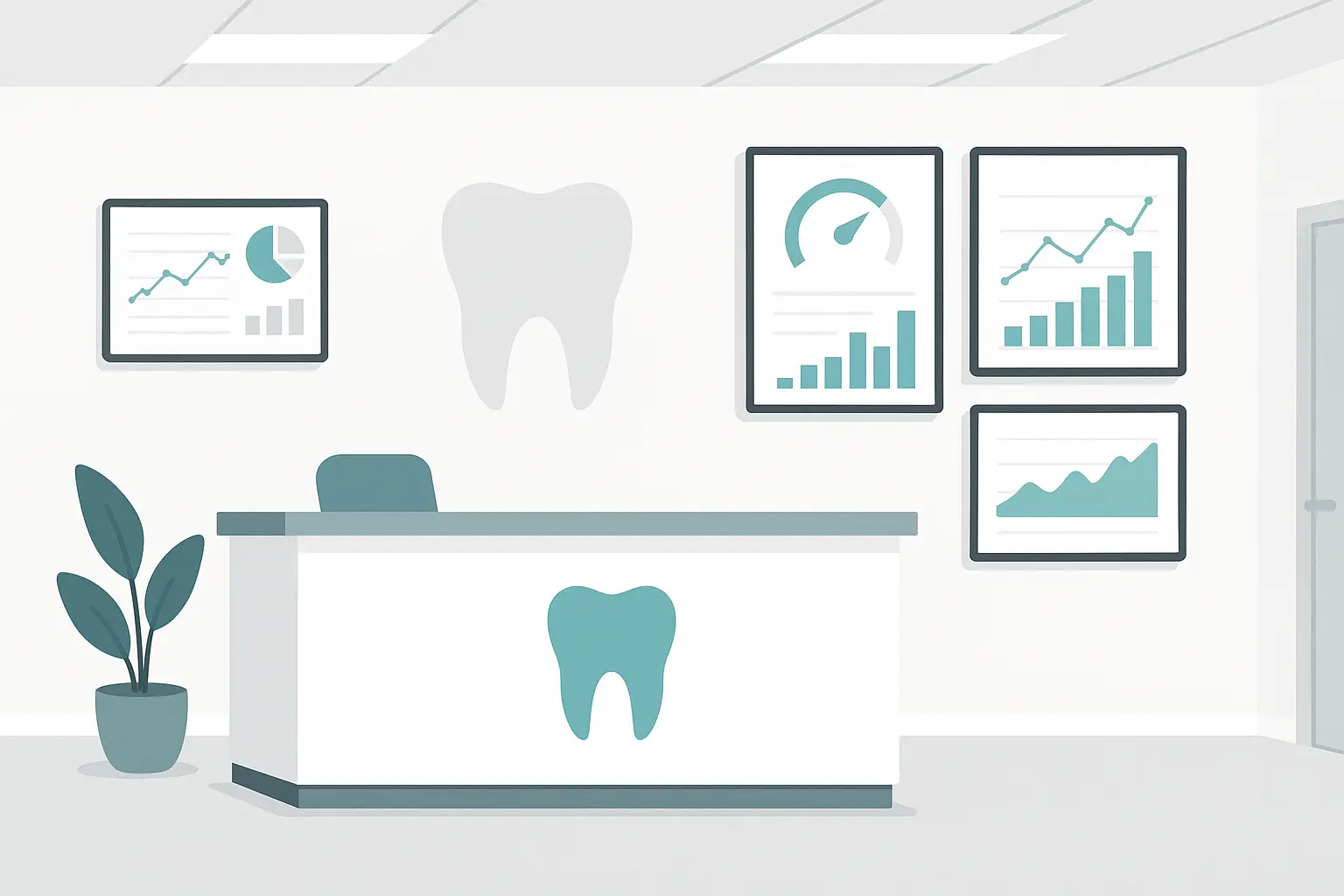
Baseline Metrics That Actually Matter
The best case studies start by showing you exactly where the practice was before anything happened. I’m talking specific organic traffic numbers, keyword rankings for actual dental terms people search for, and local search visibility metrics. Without this foundation, you’re basically reading a fairy tale.
You know what’s funny? Just like comprehensive Google Analytics case studies demonstrate measurable improvements, legitimate dental SEO studies also show realistic timeframes. If someone’s telling you they got a dental practice to page one in 30 days, do yourself a favor and run. Real SEO results typically take 6-12 months for significant impact, especially when you’re fighting in competitive dental markets where everyone’s trying the same tricks.
Market Context Makes All the Difference
Here’s something most people don’t think about – a rural Montana practice competing against two established dentists faces completely different challenges than a Beverly Hills cosmetic dentist fighting for visibility among fifty other practices with massive marketing budgets. The geographic market size, competitive landscape, and local demographics all influence what strategies will actually work (and which ones will drain your bank account for nothing).
Population density, average income levels, and healthcare accessibility in the area directly impact patient acquisition costs and conversion rates. Smart case studies acknowledge these variables instead of pretending there’s some magic formula that works everywhere.
Strategy Depth Beyond Surface-Level Tactics
Surface-level case studies mention “we did SEO and got results.” The valuable ones break down the technical foundation improvements, content strategy specifics, local SEO components, and link building approaches used. You want to see details about website speed optimization, mobile responsiveness improvements, schema markup implementation, and site architecture changes. These technical elements often determine whether SEO efforts succeed or fail – and most practices completely ignore them.
Measurable Outcomes With Revenue Attribution
The most credible case studies track multiple metrics: organic traffic growth percentages, keyword performance improvements, local search visibility increases, conversion metrics like phone calls and appointment bookings, and most importantly – actual revenue impact.
When a case study shows that SEO efforts generated $180,000 in additional annual revenue, that’s data you can actually use to justify your marketing investment. Vague claims about “increased visibility” don’t pay the bills or help you decide if SEO is worth the money.
|
Case Study Quality Indicators |
What to Look For |
Red Flags to Avoid |
|---|---|---|
|
Baseline Metrics |
Specific traffic numbers, keyword positions, conversion rates |
Vague “low visibility” claims |
|
Timeline Expectations |
6-12 months for significant results |
“Page 1 in 30 days” promises |
|
Market Context |
Geographic details, competition analysis, demographics |
One-size-fits-all approaches |
|
Strategy Documentation |
Technical details, content specifics, link building methods |
Generic “we did SEO” statements |
|
Revenue Attribution |
Dollar amounts, ROI calculations, patient acquisition costs |
Traffic increases without revenue data |
Quick Wins You Can Implement Today
Before we dive into the complex stuff, let me share some things you can literally do this afternoon that’ll start moving the needle. I learned this the hard way after watching too many dentists get overwhelmed by all the technical jargon and never actually DO anything.
You know what’s funny? The biggest impact often comes from the simplest changes. Just like successful Google My Business case studies demonstrate, Google Business Profile optimization tops the list. But here’s the thing – most dentists mess this up because they think it’s about stuffing keywords everywhere. Wrong. It’s about being genuinely helpful.
Dr. Sarah Mitchell’s Quick Win Success: Take this family dentist in suburban Phoenix. She spent exactly 2 hours (she timed it because she’s that type of person) updating her Google Business Profile. Added some photos of her newly renovated waiting room, wrote actual helpful answers to questions patients were asking, and answered 15 common patient questions. Three weeks later, she’s showing up in the map pack for “family dentist near me.” Twelve new patient calls. From two hours of work.
Citation building sounds boring, I know. But think of it like this – every directory listing is like a vote of confidence that you actually exist and aren’t some fly-by-night operation. Healthcare directories especially matter because Google trusts them more than random business sites. Consistency across all listings (name, address, phone number) signals credibility to search engines and potential patients.
And can we talk about reviews for a second? I see practices with amazing dentists who are scared to ask for reviews. Meanwhile, the mediocre practice down the street has 200 five-star reviews because they actually ASK. One practice I worked with went from 2.1 stars (ouch) to 4.7 stars just by implementing a simple system. Nothing fancy – just asking happy patients if they’d mind sharing their experience online.
The mobile thing isn’t optional anymore. Over half your potential patients are searching on their phones, probably while they’re dealing with a toothache at 11 PM. If your site takes forever to load or looks terrible on mobile, they’re gone. And so is your ranking.
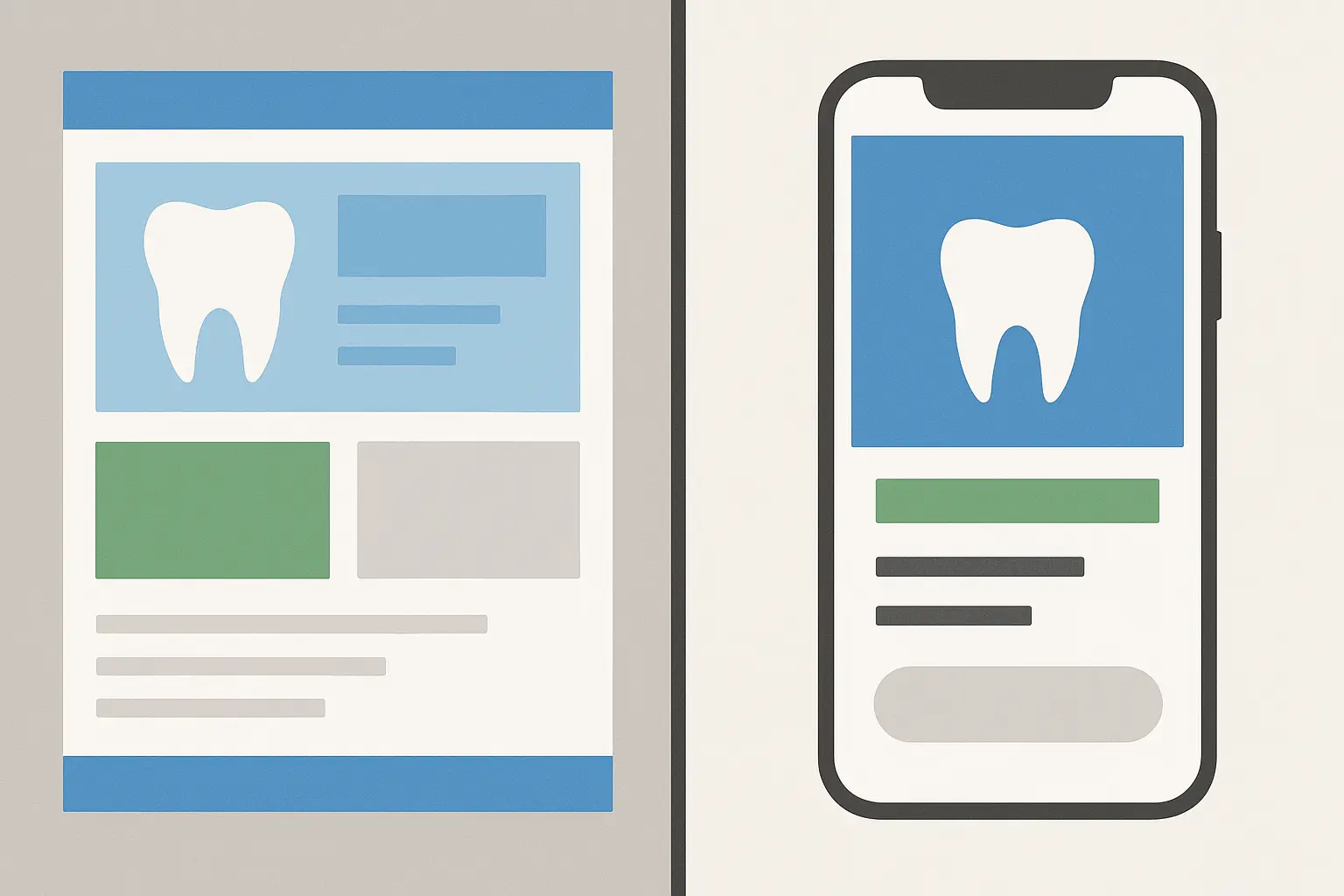
Local SEO Domination Strategies
This is where things get interesting. Local SEO is like being the mayor of your little corner of the internet – and trust me, it’s way more powerful than you think.
1. Small Town Family Dentistry – Complete Local Market Capture
Picture this: A brand new family dental practice opens in rural Montana. Population 15,000. Two established competitors who’ve been there since the dinosaurs roamed the earth. The new guy doesn’t know anyone, has zero reputation, and is competing against practices that have been treating families for generations. Sounds impossible, right?
Wrong. This practice basically ate everyone’s lunch within eight months. Here’s how they did it (and why it worked so well):
They became genuinely involved in the community. Not fake “let’s sponsor a little league team for the photo op” involvement. Real involvement. They showed up to school board meetings, participated in health fairs, created content about local health initiatives. Google noticed. The community noticed.
Their Google Business Profile became like a local newspaper – constantly updated with community involvement, fresh photos, answers to questions people were actually asking. They posted weekly updates about what they were doing in the community, not generic dental health tips that everyone ignores.
But here’s the kicker – they got 200+ reviews with a 4.9-star average. In a town of 15,000 people. That’s not luck, that’s systematic relationship building and genuinely caring about patient experience.
The results? They went from zero to hero: 340% increase in organic traffic, #1 rankings for 23 local dental keywords, monthly new patient calls increased from 12 to 47, and $180,000 in additional annual revenue. In rural Montana. Let that sink in.
2. Urban Dental Group – Multi-Location Local SEO
Managing SEO for multiple locations is like herding cats, except the cats are all in different neighborhoods with different personalities and problems. This Chicago-area group had four locations and was getting steamrolled by corporate dental chains with their unified marketing approach.
Their breakthrough came from treating each location like its own little business while keeping the brand consistent. Sounds simple, but most practices either go too generic (boring) or too different (confusing).
Each location got neighborhood-specific content. The Lincoln Park location talked about serving young professionals who needed convenient scheduling. The suburban Naperville location focused on families and kids. Same brand, different local flavor that actually resonated with each community.
The key was creating individual Google Business Profiles for each location while maintaining brand consistency. Each location received location-specific content and targeted local keywords relevant to their specific neighborhoods and demographics.
Results across all four locations averaged 280% increase in organic traffic, all locations achieved top 3 map pack rankings for primary keywords, 65% increase in appointment bookings, and $420,000 combined additional annual revenue. Not bad for some strategic thinking.
3. Pediatric Dentistry Local Niche Domination
Here’s something most people don’t realize – competing for pediatric patients is completely different from general dentistry. Parents search differently, worry about different things, and make decisions differently than adults booking their own appointments.
This suburban Dallas practice figured that out and went all-in on being THE pediatric dentist in their area. They created content addressing every parent concern imaginable – anxiety management for kids, developmental milestones, school dental programs, even how to handle dental emergencies during soccer practice.
The genius move? They partnered with local schools. Not just for business, but because they genuinely cared about kids’ dental health. Those partnerships generated natural backlinks and community credibility that money can’t buy. School websites started linking to their educational resources, parent groups recommended them, and teachers knew who to call for dental emergencies.
Local school partnerships provided valuable backlinks and community credibility. They offered educational presentations and dental screenings, which generated natural mentions and links from school websites and parent groups.
Results: 450% increase in pediatric-specific organic traffic, #1 rankings for 15 pediatric dental keywords locally, 85% increase in pediatric patient base, and 40% reduction in patient acquisition costs. Sometimes focusing on doing one thing really well beats trying to be everything to everyone.

4. Emergency Dentist Local Visibility
Emergency dental searches are weird. People are in pain, it’s usually after hours, and they need help NOW. Traditional SEO advice doesn’t apply when someone’s tooth is throbbing at 2 AM and they’re desperately googling “emergency dentist near me” while pacing around their kitchen.
This Phoenix practice realized that opportunity and specialized in capturing urgent dental care searches. Their emergency-focused strategy optimized for time-sensitive keywords and made sure their emergency contact info was impossible to miss on every single page.
But the real breakthrough came from featured snippets – those boxes that appear at the top of Google results. They created comprehensive FAQ content answering every emergency dental question imaginable. “What do I do if my tooth gets knocked out?” “How do I handle a broken filling at midnight?” “When is tooth pain actually an emergency?”
Google started showing their answers as featured snippets for urgent dental queries. Boom – instant credibility and visibility when people neede d it most.
The emergency focus paid off big time: 520% increase in emergency dental traffic, featured snippets for 8 emergency dental queries, 300% increase in after-hours emergency calls, and $95,000 additional revenue from emergency services.
5. Cosmetic Dentistry Local Authority Building
Beverly Hills cosmetic dentistry might be the most competitive market on the planet. Everyone’s got fancy offices, celebrity clients, and massive marketing budgets. So how do you stand out when every practice claims to be “the best cosmetic dentist in Beverly Hills”?
This practice focused on becoming the actual expert, not just looking like one. They created detailed case studies of cosmetic transformations, educational content about advanced procedures, and positioned themselves as genuine thought leaders in cosmetic dentistry.
The celebrity content partnerships were smart – not just name-dropping famous clients (which would violate privacy anyway), but creating genuinely useful content about cosmetic trends and advanced techniques that attracted attention from industry publications and influencers.
Their authority-based approach emphasized premium content showcasing expertise and results. They developed case studies of cosmetic transformations, educational content about advanced procedures, and positioned the practice as a thought leader in cosmetic dentistry.
Results: 190% increase in cosmetic dentistry organic traffic, top 3 rankings for 12 high-value cosmetic dental keywords, 75% increase in cosmetic consultation bookings, and $380,000 additional annual revenue from cosmetic procedures. In Beverly Hills, that’s what winning looks like.
Technical SEO Transformations
Okay, I’ll be honest – technical SEO is where most dental practices completely lose their minds. It sounds complicated, boring, and expensive. But here’s the thing: it’s often the difference between success and failure. Understanding technical SEO fundamentals becomes crucial for practices wanting to maximize their digital presence.
|
Technical SEO Element |
Before Optimization |
After Optimization |
Impact on Results |
|---|---|---|---|
|
Site Loading Speed |
8.2 seconds |
1.8 seconds |
380% traffic increase |
|
Mobile Usability Score |
32% |
98% |
45% conversion improvement |
|
Core Web Vitals |
Poor (Red) |
Good (Green) |
290% search visibility |
|
Schema Markup |
None |
LocalBusiness + Medical |
Featured snippets achieved |
|
Site Architecture |
Confusing navigation |
Logical URL structure |
85% better user engagement |
6. Legacy Website Complete Technical Transformation
Let me tell you about this Boston practice that had been limping along with the same website for over 10 years. TEN YEARS. I’m not exaggerating – this site was older than some of their dental assistants. The thing loaded slower than dial-up internet (remember that?), looked terrible on phones, and had more technical problems than a 1985 Yugo.
The complete technical overhaul was like dental surgery for websites. They started with site architecture redesign, implementing a logical URL structure that organized services into clear categories. Before, trying to find information on their site was like navigating a maze blindfolded. After, it made sense to both users and search engines.
Core Web Vitals optimization became a priority. They compressed images that were bigger than most people’s hard drives, implemented a content delivery network, and minified code to achieve excellent performance scores across all Google’s speed metrics.
Schema markup implementation helped search engines understand their content better. They added LocalBusiness, MedicalBusiness, and FAQ schemas to provide rich snippets in search results.
The transformation was dramatic: site speed went from 8.2 seconds (I’m not kidding) to 1.8 seconds. 380% increase in organic traffic within 6 months, mobile usability score increased from 32% to 98%, and 45% improvement in conversion rate. Sometimes you just have to rip the band-aid off and do it right.
7. WordPress to Custom CMS Migration
This Seattle practice outgrew their WordPress website’s capabilities and needed advanced features specific to dental practices. Their custom healthcare-focused CMS provided better SEO control and patient management integration.
The migration was tricky – you have to preserve all your existing SEO value while implementing new features like integrated appointment booking, patient portal access, and treatment plan presentations. The custom CMS allowed for more sophisticated SEO optimization than standard WordPress themes could handle.
Advanced tracking and analytics capabilities provided better insights into patient behavior and conversion paths. They could actually track which content led to appointment bookings and optimize accordingly – something that’s nearly impossible with basic WordPress setups.
Results from the migration: 290% increase in organic search visibility, 60% improvement in site performance metrics, enhanced appointment booking integration increased conversions by 85%, and $240,000 additional annual revenue.

8. Mobile-First Dental Website Optimization
This Miami practice discovered that 70% of their traffic was coming from mobile devices, but their mobile user experience was absolutely terrible. People were bouncing faster than a rubber ball because the site was impossible to use on phones.
The mobile-first redesign prioritized touch-friendly navigation, lightning-fast loading times, and easy access to the stuff people actually want when they’re on mobile – contact information, hours, and appointment booking. They redesigned forms specifically for mobile completion and optimized images for various screen sizes.
Patient journey mapping informed the mobile design. They realized that most mobile users wanted to quickly find location information, hours, and contact details, so these elements got prominent placement instead of being buried in some menu.
Mobile optimization results: mobile conversion rate increased by 320%, mobile organic traffic increased by 180%, average session duration increased by 145%, and mobile appointment bookings increased by 250%.
9. International SEO for Dental Tourism
Dental tourism presents unique SEO challenges – you’re trying to optimize for international patients while building trust and credibility across borders. This Tijuana practice targeted US patients seeking affordable dental care, which meant overcoming some serious trust barriers.
International SEO implementation included hreflang tags for language targeting, content addressing common concerns about medical tourism, and trust signals like certifications and patient testimonials from US patients who’d actually made the trip.
Currency conversion tools, treatment cost comparisons, and detailed information about the border crossing process helped address practical concerns that prevented conversions. They basically had to become travel agents in addition to dentists.
The international focus generated: 440% increase in US organic traffic, top 5 rankings for dental tourism keywords, 190% increase in consultation requests from US patients, and $380,000 additional revenue from international patient services.
10. Voice Search Optimization for Dental Queries
Voice search usage keeps growing, especially for local business searches. This Austin practice realized people were asking their phones and smart speakers different questions than they were typing into Google.
Voice search optimization required targeting longer, more conversational keywords that people actually speak rather than type. Instead of optimizing for “dentist Austin,” they targeted “where can I find a good dentist near me” and “what should I do about tooth pain.”
Featured snippet optimization became crucial since voice assistants often read featured snippet content as answers. They structured content to directly answer common dental questions in concise, voice-friendly formats.
Voice search results: 35% of organic traffic now comes from voice search queries, featured snippets achieved for 25 dental FAQ queries, 80% increase in “near me” dental searches, and 40% increase in same-day appointment bookings.
Content Marketing Excellence
Content marketing for dentists isn’t about churning out generic blog posts about flossing (though apparently everyone still tries that approach). It’s about genuinely helping people understand their oral health and building trust before they ever walk through your door.
11. Educational Blog Driving Patient Acquisition
This Denver practice cracked the code by mapping content to the entire patient journey, similar to approaches outlined in high-impact blog topics research. Awareness stage: general oral health topics that people actually search for. Consideration stage: treatment options explained in plain English, not dental jargon. Decision stage: showcasing expertise and real patient results.
They published consistently for 52 weeks straight (yes, every single week) and created seasonal content that captured timely searches – back-to-school dental checkups, holiday smile makeovers, New Year’s resolution dental health goals.
Interactive content including dental health quizzes and assessment tools engaged visitors and provided lead generation opportunities. Video integration with procedure explanations and patient testimonials built trust and credibility in ways that text alone never could.
The results were incredible: blog traffic increased by 650% in 12 months, generated 180 new patients directly from blog content, average time on site increased by 240%, and they became the go-to dental authority in Denver.
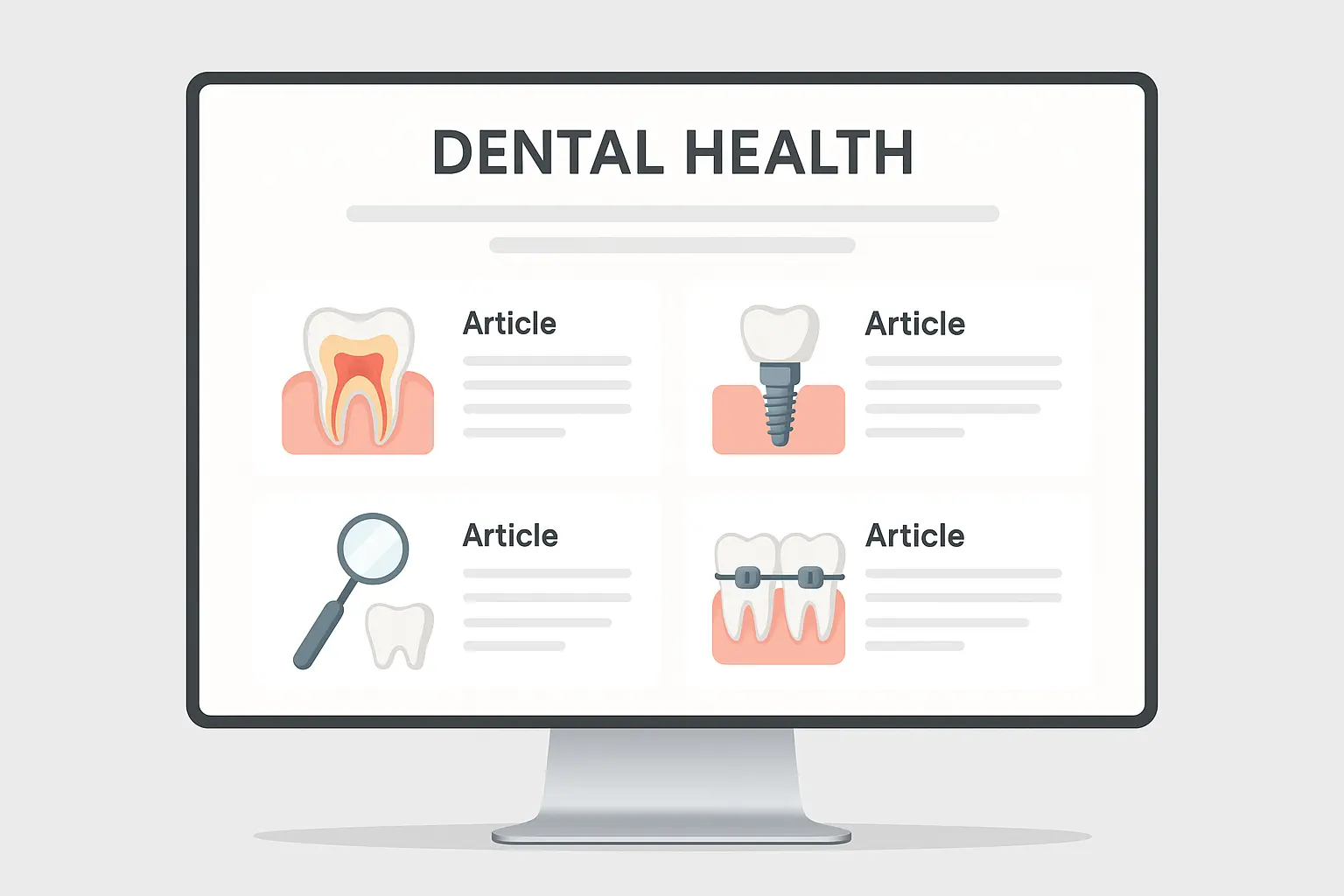
12. Video Content Marketing for Oral Surgery
Patient anxiety about oral surgery procedures creates a massive barrier to treatment acceptance. People hear “oral surgery” and immediately start imagining the worst-case scenarios. This Atlanta practice used video content to address patient concerns and explain procedures in ways that actually made sense to normal humans.
Their video-first strategy included procedure explanations, patient testimonials, and behind-the-scenes content showing the practice’s technology and expertise. Videos addressed common fears and misconceptions about oral surgery that were preventing people from getting needed treatment.
YouTube optimization helped videos rank for procedure-specific searches. They created playlists for different types of oral surgery and optimized video descriptions with relevant keywords and links back to their website.
Here’s the crazy part – patient education videos actually reduced anxiety and increased treatment acceptance rates. When patients understood procedures better, they felt more comfortable moving forward with recommended treatments instead of putting them off indefinitely.
Video content impact: video content generated 85% of organic traffic growth, 290% increase in oral surgery consultations, patient anxiety scores decreased by 60% (measured via surveys), and $340,000 additional revenue from increased procedure acceptance.
Dr. James Rodriguez’s Video Success: An oral surgeon in Tampa created a simple 3-minute video explaining wisdom tooth extraction using basic animations and calm narration. Nothing fancy – just addressing the top 10 patient concerns he’d identified from years of consultation notes. Within 6 months, that one video ranked #1 for “wisdom tooth removal Tampa” and generated 47 new consultations, with 89% of viewers scheduling procedures compared to just 34% before the video existed.
13. Dental Health Newsletter Email Integration
Email marketing integration with SEO content creates powerful patient retention and acquisition opportunities. This Portland practice was struggling with low patient retention and irregular appointment scheduling – classic problems that eat into practice profitability.
Their integrated approach used SEO-optimized content as lead magnets to build email lists. They created downloadable guides about dental health topics that required email signup, then nurtured subscribers with regular educational content instead of constant sales pitches.
Automated email sequences guided new subscribers through educational content while promoting preventive care appointments. They segmented lists based on interests and treatment history for personalized messaging that actually felt relevant.
The email integration strategy delivered: email list grew by 480% through SEO content lead magnets, patient retention rate increased by 35%, 65% increase in preventive care appointments, and $125,000 additional annual revenue from improved retention.
14. Community Health Content Partnership
Building trust and authority in competitive markets requires more than standard dental content. This Nashville practice partnered with local health organizations to create collaborative content that established credibility and generated high-quality backlinks naturally.
Their partnership strategy involved collaborating with local hospitals, health departments, and wellness organizations on community health initiatives. They created joint content about oral health’s connection to overall wellness and participated in community health fairs as the dental expert.
Local media relationships developed naturally from their community involvement. They became the go-to dental expert for local news outlets when dental health stories emerged, generating valuable publicity and backlinks that you can’t buy.
Healthcare provider referral networks expanded through content partnerships. Other healthcare professionals began referring patients after seeing the practice’s commitment to community health education and genuine expertise.
Community partnership results: earned 45 high-quality backlinks from health organizations, organic traffic increased by 220%, established as go-to dental expert for local media, and 50% increase in referrals from healthcare providers.
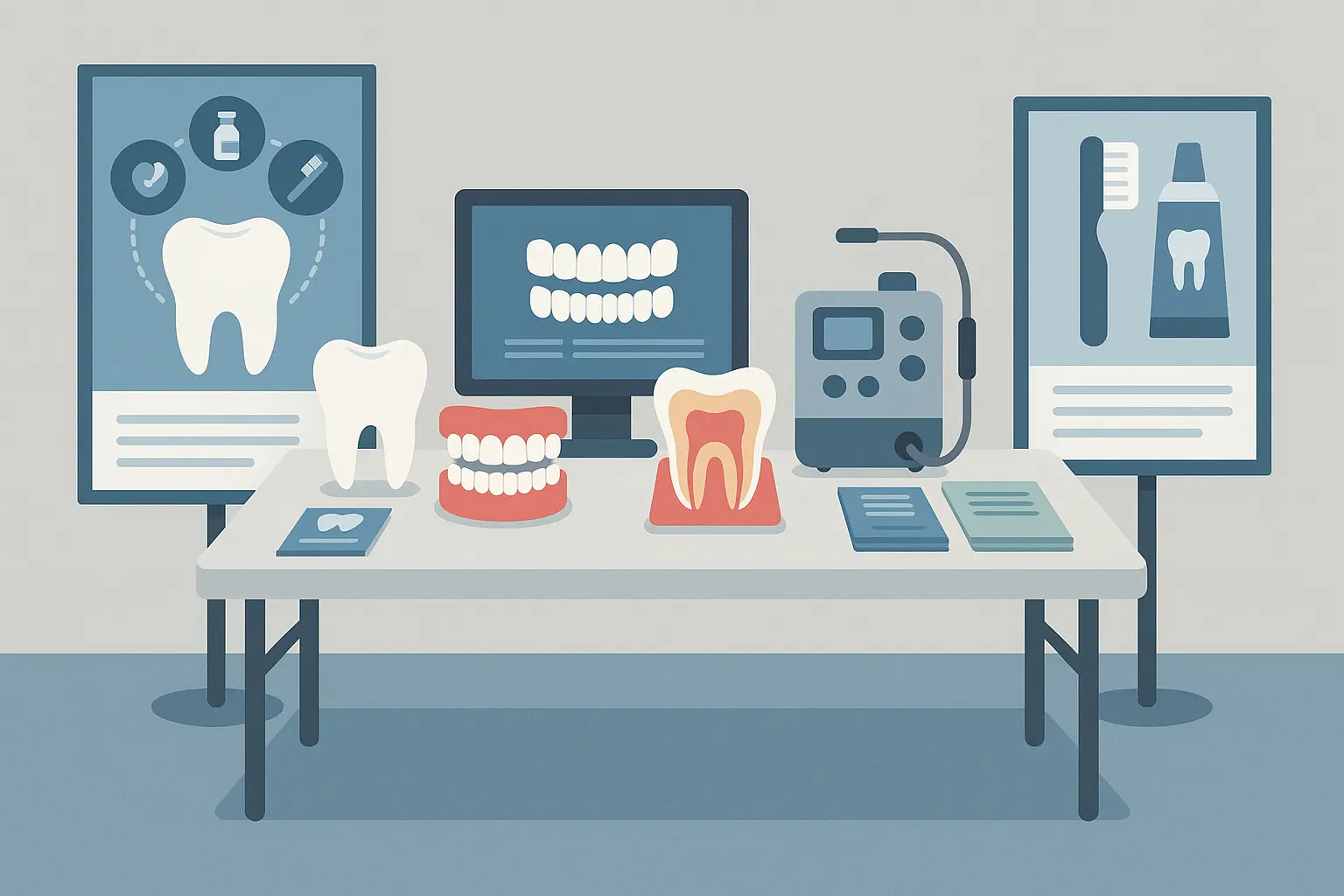
15. Multilingual Content for Diverse Demographics
This LA practice recognized a huge opportunity to serve the Spanish-speaking community in their area. But here’s the thing – they went way beyond simple translation to create culturally relevant content that actually resonated.
Their multilingual strategy addressed specific concerns and preferences of Hispanic patients, including family-oriented dental care approaches and flexible payment options. Spanish-language SEO required separate keyword research because Spanish dental searches often used completely different terminology and search patterns than English queries.
Community outreach in Spanish-speaking neighborhoods built genuine trust and credibility. They participated in community events, partnered with Hispanic community organizations, and became a real part of the community rather than just another business trying to extract money.
Multilingual expansion results: Spanish content generated 340% more traffic than English content, 180% increase in Hispanic patient demographic, expanded to serve 65% of local Hispanic population, and $290,000 additional annual revenue from demographic expansion.
Competitive Analysis & Market Penetration
David vs. Goliath battles happen every day in dentistry. Independent practices competing against corporate chains with massive marketing budgets. The secret? Focus on what big chains can’t do – personalized service and genuine community involvement.
Practice Type Main Competitive Challenge Winning Strategy Results Achieved Independent vs Corporate Limited marketing budget Community involvement + personalized care 320% increase in targeted searches Specialist vs General Justifying higher fees Authority content + complex case showcases 260% increase in specialist referrals New Practice Entry Zero market presence Aggressive local SEO + innovative services 8% market share in 12 months Practice Acquisition Fragmented online presence Unified branding + preserved local relevance 190% combined traffic increase Niche Service Focus Cross-industry competition Educational content + medical partnerships 35% market capture in specialty
16. David vs. Goliath – Independent vs. Corporate Chain
This Houston practice was getting absolutely crushed by Aspen Dental’s massive marketing presence in their area. Corporate chains have deep pockets, brand recognition, and marketing teams that independent practices can’t match dollar-for-dollar.
Instead of trying to out-spend them, they shifted strategy completely. They emphasized personalized service positioning and community involvement that corporate chains simply can’t replicate at scale. They highlighted continuity of care with the same dentist and personalized treatment plans instead of the assembly-line approach.
Competitive keyword analysis revealed over 150 keywords where corporate chains were actually vulnerable. They created content addressing corporate chain limitations and highlighting the benefits of independent dental care – things like knowing your dentist’s name and getting consistent care.
Review strategy became crucial for differentiation. They systematically collected and showcased patient testimonials emphasizing personalized care, while corporate competitors struggled with inconsistent service quality reviews across multiple locations.
Independent practice success: achieved higher local rankings than corporate competitor, 320% increase in “independent dentist” related searches, 85% patient retention rate vs. competitor’s 45%, and $410,000 additional revenue by capturing dissatisfied corporate patients.
17. Specialist vs. General Practitioner Competition
Orthodontists often face competition from general dentists offering Invisalign and other orthodontic services at lower prices. This San Diego orthodontist needed to establish clear authority and justify higher fees through specialist expertise positioning.
Their authority-based strategy emphasized advanced training, complex case experience, and superior results that general practitioners simply couldn’t match. They created detailed content showcasing complex orthodontic cases and treatment outcomes that demonstrated their specialist expertise.
Educational content addressed the real differences between specialist and general practitioner orthodontic care. They explained when cases required specialist intervention and the actual risks of inadequate treatment – not as scare tactics, but as genuine patient education.
Before-and-after case studies demonstrated expertise with challenging orthodontic problems. They showcased cases that general practitioners typically refer to specialists, establishing their authority for complex treatments that required true specialist knowledge.
Specialist positioning results: achieved #1 rankings for 28 orthodontic specialty keywords, 260% increase in complex orthodontic cases, average case value increased by 145%, and $520,000 additional annual revenue from specialist positioning.
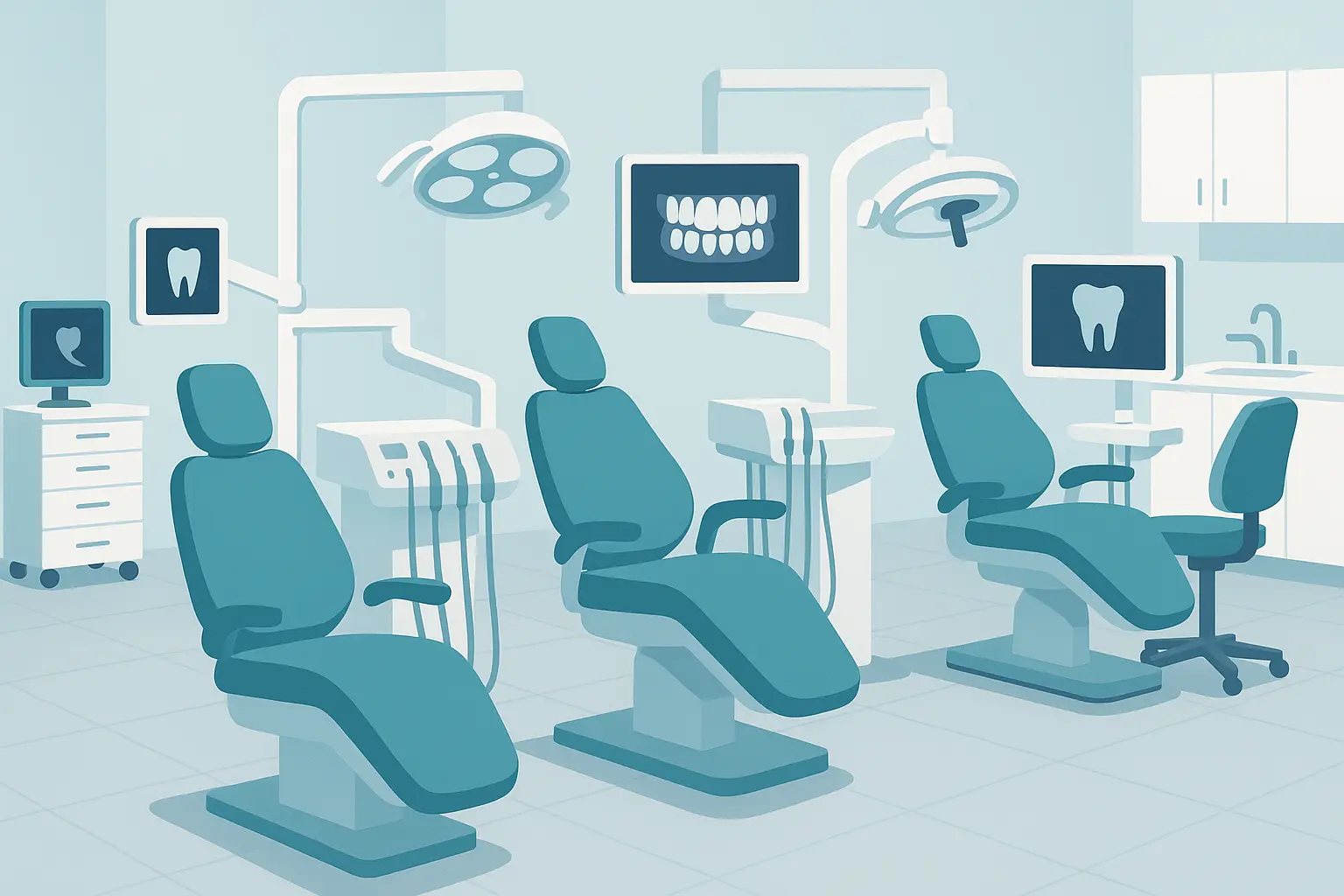
18. New Practice Market Entry Strategy
Entering a saturated dental market requires aggressive SEO strategies and innovative service offerings to capture market share quickly. This Charlotte practice needed to establish visibility and credibility as a completely new practice with zero reputation or patient base.
Their market entry strategy combined aggressive local SEO with innovative service offerings that established competitors didn’t provide. They offered extended hours, same-day appointments, and advanced technology that appealed to busy professionals who couldn’t get convenient care elsewhere.
Content marketing focused on addressing gaps in competitor services. They created content about modern dental technology, convenient scheduling options, and patient-centered care approaches that differentiated them from traditional practices.
Google Ads integration with SEO provided immediate visibility while organic rankings developed. They used paid search to capture immediate traffic while building long-term organic presence – a smart approach for new practices that can’t wait 6 months for results.
New practice success: achieved page 1 rankings within 4 months for 35 dental keywords, generated 150 new patients in first 6 months, captured 8% market share in target area within first year, and reached break-even 6 months ahead of projections.
Dr. Amanda Chen’s Market Entry: A new general dentist entering competitive Raleigh market differentiated by offering “lunch-hour cleanings” for downtown professionals. She created content around “quick dental care for busy professionals” and optimized for “fast dental cleaning Raleigh” keywords. Within 8 months, she captured 40% of her patient base from downtown office workers and generated $190,000 in revenue from this niche positioning alone.
19. Acquisition Integration SEO Strategy
Dental practice acquisitions require careful SEO integration to maintain existing rankings while building unified brand authority. This Tampa dental group acquired three practices and needed to integrate their online presence without losing the SEO value each practice had built over years.
Their integration strategy preserved existing SEO value from acquired practices while building unified brand authority. They maintained separate location pages while creating consistent branding and messaging across all properties – tricky but essential for maintaining local relevance.
Technical SEO integration involved careful URL structure planning and 301 redirects to preserve link equity. They consolidated duplicate content while maintaining location-specific information that patients relied on for each practice.
Content strategy unified messaging while preserving local relevance for each location. They created brand-level content while maintaining location-specific service pages and local information that each community expected.
Acquisition integration results: combined organic traffic increased by 190% across all locations, unified brand achieved stronger local authority than individual practices, 40% reduction in marketing costs through consolidated efforts, and $380,000 additional revenue from improved online presence.
20. Niche Service Market Domination
Specialized dental services often compete against medical providers in addition to other dentists. This Scottsdale practice specialized in sleep apnea dentistry and needed to compete against medical sleep centers for patients – a completely different competitive landscape.
Their cross-industry competitive strategy positioned dental sleep medicine as a more convenient and effective alternative to traditional medical sleep treatments. They created content comparing dental appliances to CPAP machines and explaining the advantages of dental treatment approaches.
Educational content addressed the connection between dental health and sleep disorders. They explained how dentists could treat sleep apnea and the advantages of dental appliances over medical treatments – information that most patients had never heard before.
Medical professional relationships created referral opportunities from physicians who recognized the benefits of dental sleep medicine. They educated medical providers about dental treatment options instead of competing against them.
Niche domination results: achieved #1 rankings for 15 dental sleep medicine keywords, 480% increase in sleep apnea consultations, captured 35% of local dental sleep medicine market, and $290,000 additional revenue from specialized service focus.
E-commerce & Online Booking Integration
Modern dental practices can significantly boost revenue through integrated e-commerce capabilities and streamlined online booking systems. The practices that figured this out early saw dramatic improvements in both conversion rates and operational efficiency.
21. Online Appointment Booking Optimization
This San Francisco practice had strong SEO performance but terrible appointment conversion rates. High website traffic with low appointment conversion rates usually means your booking process sucks – and that’s exactly what was happening here.
Their UX optimization focused on streamlining the appointment booking process. They reduced booking form fields from 15 to 5 essential ones, implemented real-time availability display, and created mobile-optimized booking interfaces that actually worked on phones.
A/B testing revealed that simplified booking forms with fewer required fields increased completion rates significantly. They tested different form layouts and call-to-action placements to optimize conversions – turns out people hate filling out long forms when their tooth hurts.
Integration with practice management software enabled real-time scheduling and automated confirmation systems. Patients could see actual availability and receive immediate booking confirmations instead of waiting for someone to call them back.
Booking optimization results: online booking conversion rate increased by 280%, 65% of new appointments now booked online, reduced administrative costs by 40%, and $195,000 additional revenue from improved booking efficiency.
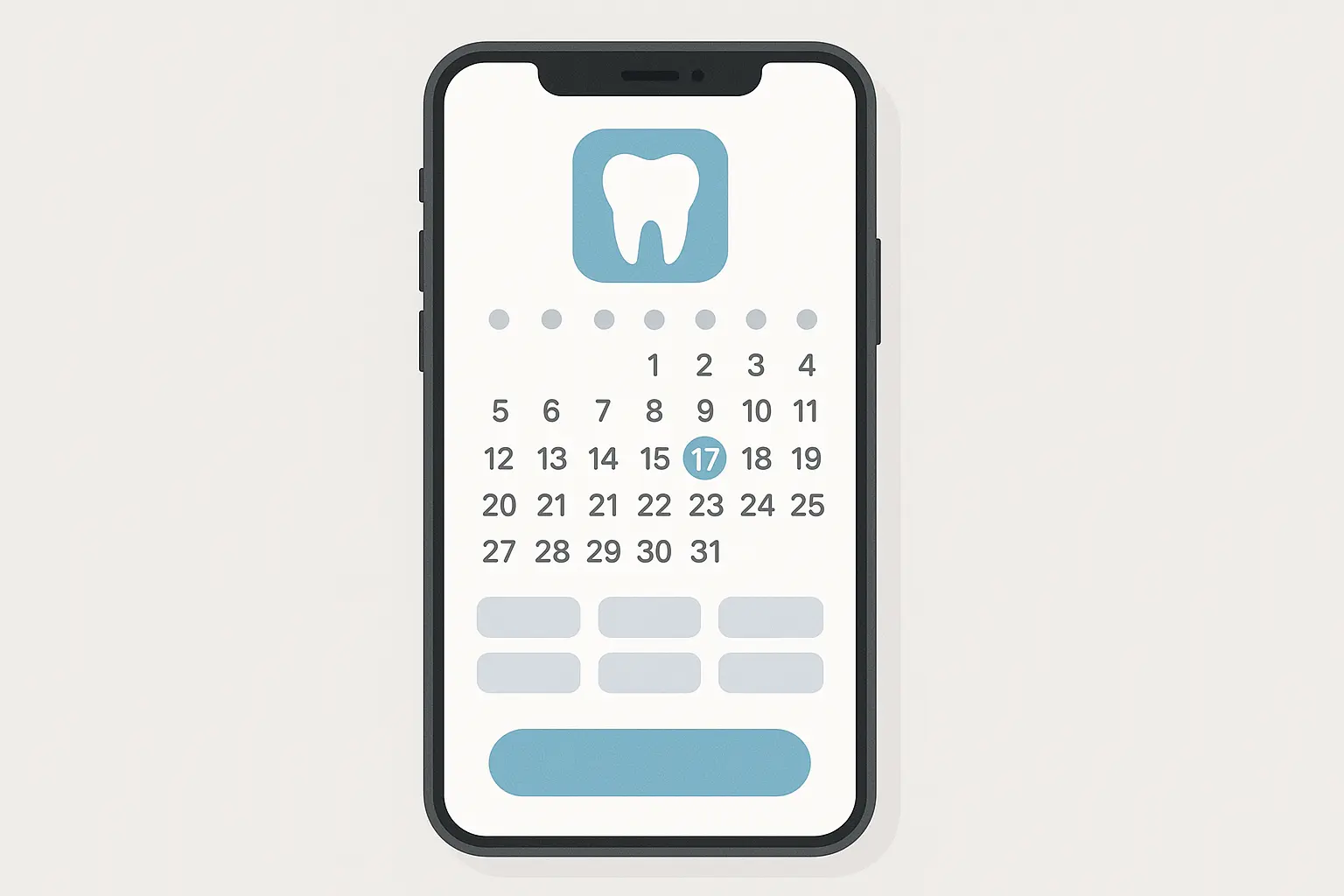
22. Dental Product E-commerce Integration
Website traffic represents a missed opportunity if you’re not monetizing it beyond just appointments. This New York City practice integrated e-commerce capabilities to sell dental care products and educational materials – basically turning their website into a profit center.
Their e-commerce strategy focused on products that complemented their services and enhanced patient education. They sold electric toothbrushes, specialized toothpastes, and oral health maintenance products that they were already recommending to patients anyway.
Product-related content drove additional traffic and provided natural opportunities for product recommendations. They created buying guides and product comparison content that ranked for commercial keywords and actually helped patients make informed decisions.
Here’s the smart part – patient education through product recommendations increased treatment plan acceptance rates. When patients understood the importance of specific products, they were more likely to follow through with recommended treatments.
E-commerce integration results: e-commerce revenue reached $85,000 annually, product-related content drove 45% traffic increase, enhanced patient education through product recommendations, and 25% increase in treatment plan acceptance rates.
23. Teledentistry SEO Optimization
Rural healthcare access challenges create opportunities for teledentistry services. This Wyoming practice developed statewide teledentistry capabilities to serve underserved rural areas – basically becoming the Netflix of dental consultations.
Their teledentistry strategy optimized for rural healthcare searches and emphasized convenience and accessibility. They created content addressing rural dental care challenges and teledentistry benefits for people who lived hours away from the nearest dentist.
Technical implementation included HIPAA-compliant video consultation platforms and integration with existing practice management systems. They ensured seamless transitions between virtual consultations and in-person treatments when necessary.
Rural community outreach built awareness of teledentistry services. They partnered with rural healthcare providers and community organizations to educate potential patients about virtual dental consultations – many people had never heard this was even possible.
Teledentistry results: teledentistry traffic increased by 520%, served patients in 85% of Wyoming counties, 290% increase in consultation bookings, and $140,000 annual revenue from teledentistry services.

Crisis Management & Recovery
Sometimes practices face reputation crises or major disruptions. The key is having a systematic approach to recovery that addresses specific challenges while rebuilding trust and patient confidence.
24. Negative Review Recovery Campaign
Online reputation attacks can absolutely devastate dental practices. This Las Vegas practice faced a coordinated negative review campaign – probably from a disgruntled employee or competitor – that severely damaged their online reputation and patient acquisition.
Their reputation recovery strategy combined SEO with systematic positive content creation. They created comprehensive FAQ content addressing concerns raised in negative reviews and showcased positive patient experiences to push negative content down in search results.
Positive content amplification pushed negative search results to later pages where fewer people would see them. They optimized positive patient testimonials, created detailed service explanation pages, and generated fresh positive content consistently to dominate search results.
Review generation systems encouraged satisfied patients to share their experiences online. They implemented systematic follow-up processes to request reviews from patients who had positive experiences – not begging, just making it easy for happy patients to help.
Legal action against obviously fake reviews combined with positive SEO efforts. They pursued removal of clearly fabricated reviews while building legitimate positive online presence that told the real story.
Reputation recovery results: overall rating improved from 2.1 to 4.7 stars, negative content pushed to page 3 of search results, 340% increase in positive patient testimonials, and recovered $280,000 in lost revenue within 8 months.
25. Post-Pandemic Practice Recovery
The COVID-19 pandemic absolutely devastated many dental practices through forced closures and patient fear about dental visits. This Detroit practice lost 60% of their patient base and needed comprehensive recovery strategies to survive.
Their safety-focused SEO strategy emphasized new safety protocols and addressed patient concerns about dental visits during the pandemic. They created detailed content about enhanced cleaning procedures, air filtration systems, and safety measures that went above and beyond requirements.
Educational content addressed COVID-19 and oral health connections. They explained how oral health impacts immune system function and the importance of maintaining dental care during the pandemic – information that helped patients understand why dental care was essential, not optional.
Virtual consultation options provided safe initial patient contact. They implemented teledentistry capabilities for consultations and follow-up appointments when appropriate, giving nervous patients a way to reconnect without physical contact.
Community leadership in dental safety established authority and trust. They participated in local health initiatives and provided expert commentary on safe dental care practices, positioning themselves as safety leaders rather than just another practice trying to get patients back.
Pandemic recovery results: achieved #1 rankings for “safe dental care” keywords, patient volume recovered to 115% of pre-pandemic levels, generated $320,000 in recovery revenue, and established as safety leader in local market.
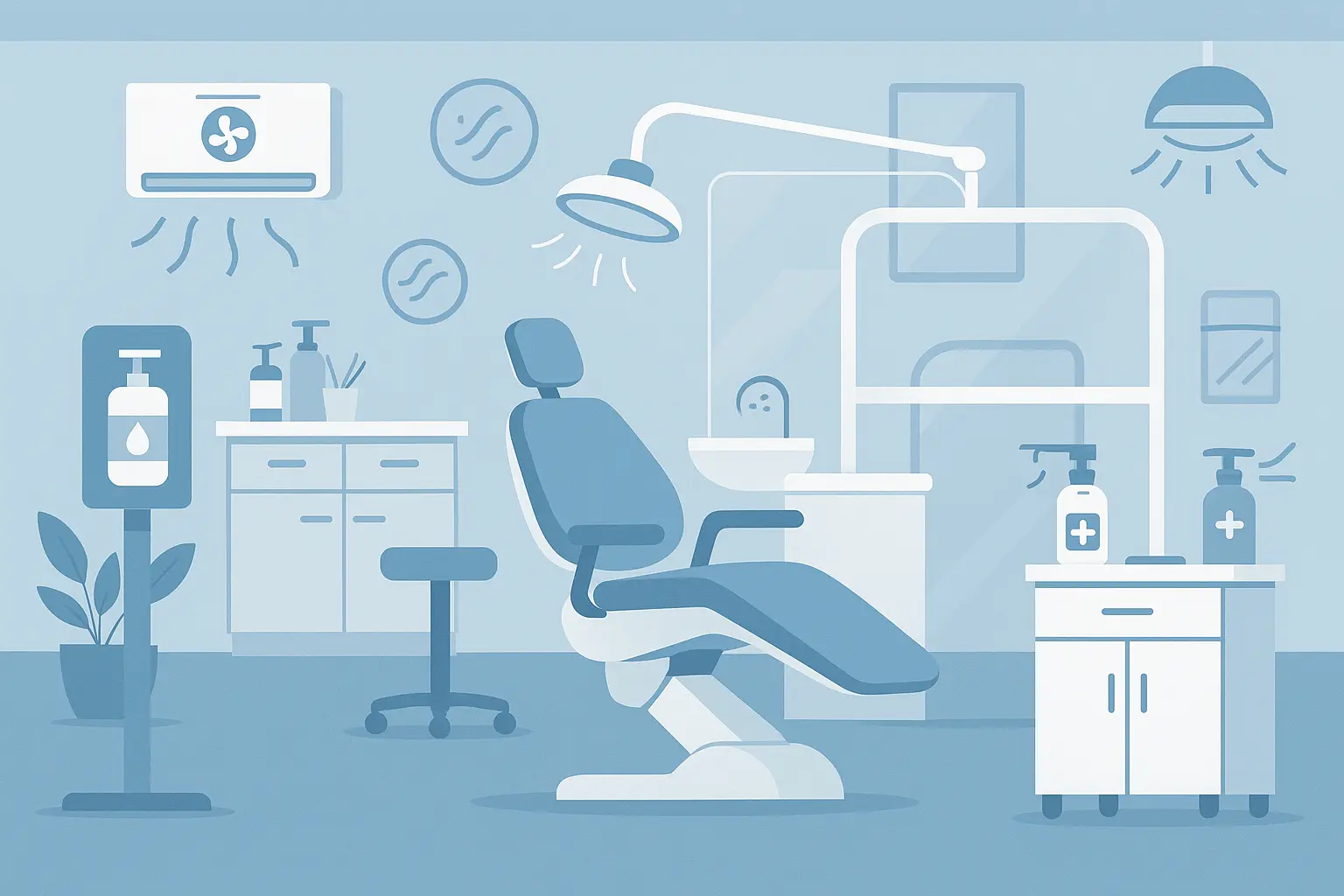
How The Marketing Agency Can Help Your Practice
After analyzing these 25 case studies, you’ve seen what’s possible when dental SEO is executed properly. The challenge? Implementation. Most practices lack the expertise, time, or resources to execute these strategies effectively without screwing something up.
The Marketing Agency’s performance-focused approach directly addresses the pain points revealed in these case studies. Their scientific methodology ensures that your practice doesn’t gamble on marketing but invests in proven, data-backed strategies similar to those documented in successful SEO case studies across various industries.
Their market analysis capabilities would be invaluable for practices facing competitive challenges like those in cases 16-20. The ability to identify gaps that most agencies miss could give your practice the competitive edge needed to capture market share from established competitors.
Technical expertise required for cases 6-10 aligns perfectly with The Marketing Agency’s systematic approach. Complex technical implementations need proper execution to avoid the pitfalls that cause many dental SEO campaigns to fail spectacularly.
With SEO services ranging from $500 to $3,000 monthly, The Marketing Agency can accommodate practices at different growth stages:
-
Startup practices ($500-1,200/month): Focus on local SEO dominance and basic content marketing
-
Growing practices ($1,200-2,500/month): Comprehensive strategies including technical optimization and competitive analysis
-
Established practices ($2,500-3,000/month): Advanced multi-location strategies, specialized positioning, and integrated solutions
The key differentiator is their emphasis on being “one of the world’s highest rated marketing teams supporting your business every step of the way.” Dental practices need ongoing optimization and strategy refinement, not just initial setup and abandonment.
Ready to stop gambling on marketing and start seeing the kind of results documented in these case studies? Schedule a consultation with The Marketing Agency to discuss how their scientific approach can transform your practice’s online presence and patient acquisition.

Final Thoughts
These 25 dentist SEO case studies reveal a clear pattern: success comes from systematic implementation of proven strategies rather than hoping generic marketing tactics will work. The practices that achieved 300-600% traffic increases and generated hundreds of thousands in additional revenue didn’t get lucky – they followed data-driven approaches tailored to their specific markets and challenges.
The most successful practices combine d multiple strategies rather than relying on single tactics. Local SEO dominance, technical optimization, content marketing, and competitive positioning work together to create sustainable competitive advantages that corporate chains and established competitors struggle to match.
Implementation complexity varies significantly, but every practice can start with basic improvements that generate immediate results. Google Business Profile optimization, systematic review generation, and mobile-friendly website improvements provide quick wins while more comprehensive strategies develop.
The revenue numbers speak for themselves – practices that invest in proper SEO see measurable returns within 6-12 months. Whether you’re a new practice entering a competitive market or an established practice looking to grow, these case studies provide the roadmap for success.
What really strikes me is how many of these practices were just regular dentists who decided to take their online presence seriously. They weren’t marketing geniuses or tech wizards – they just recognized that patients find dentists online now, and they adapted accordingly. The ones who ignored this reality are struggling. The ones who embraced it are thriving.


